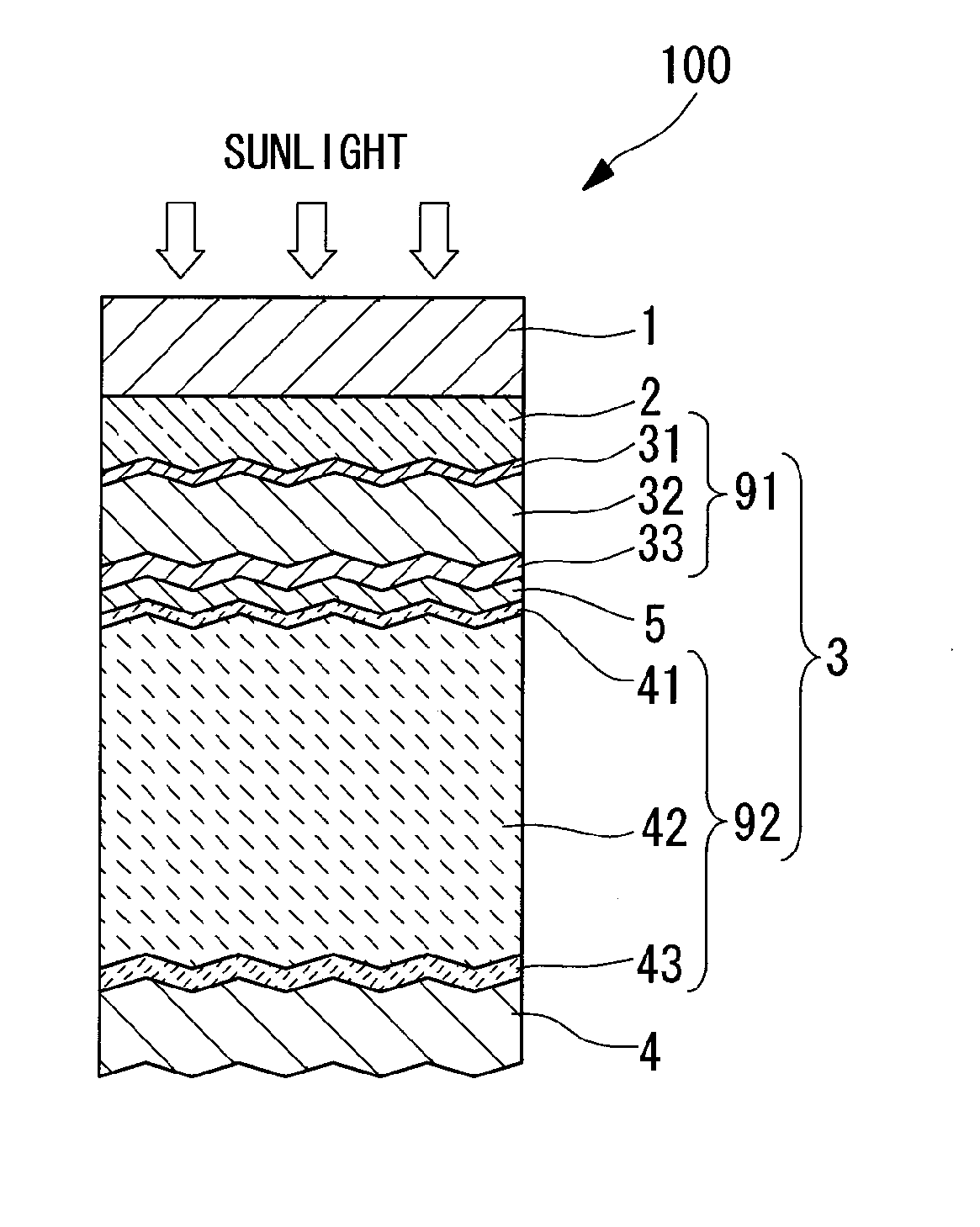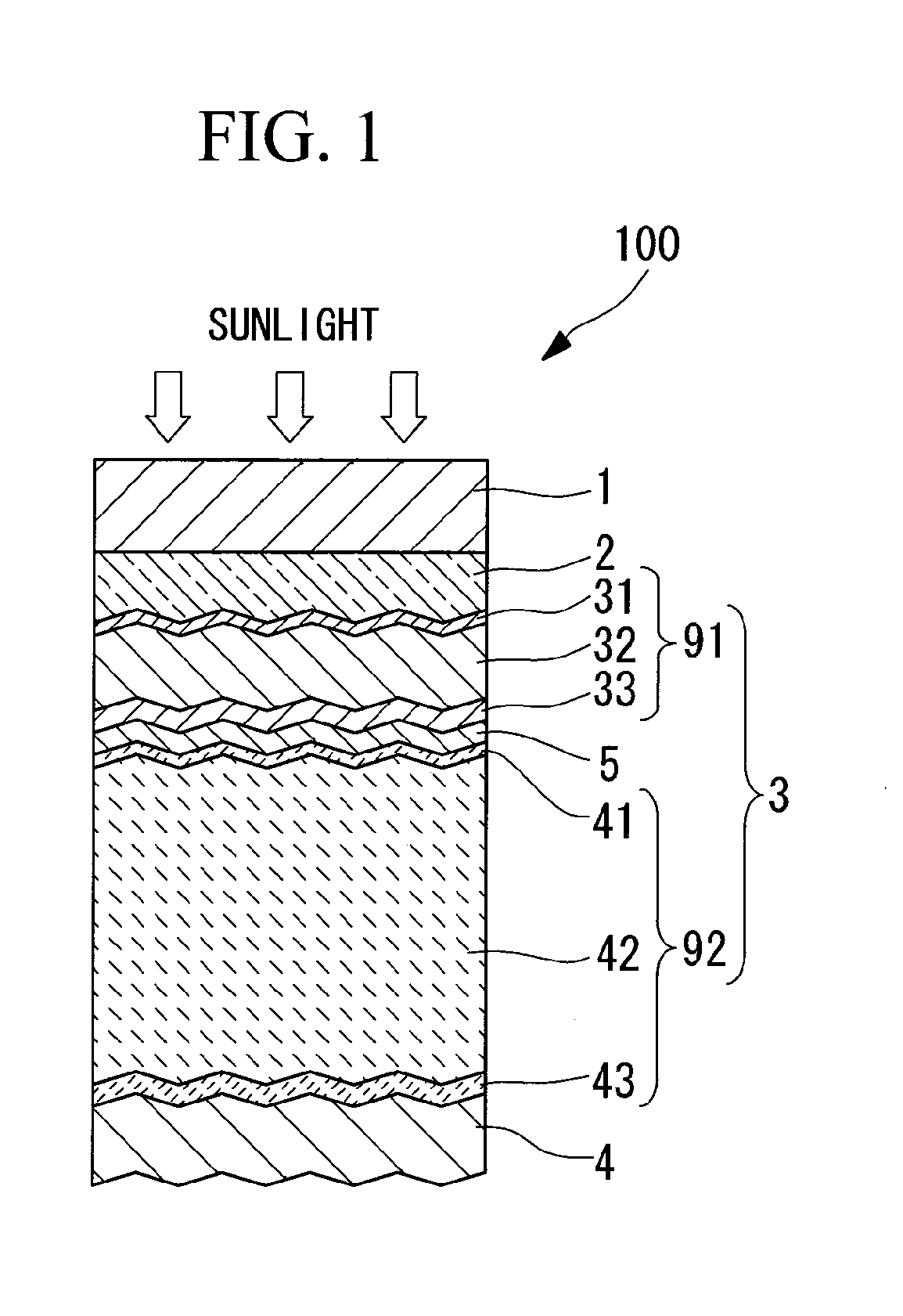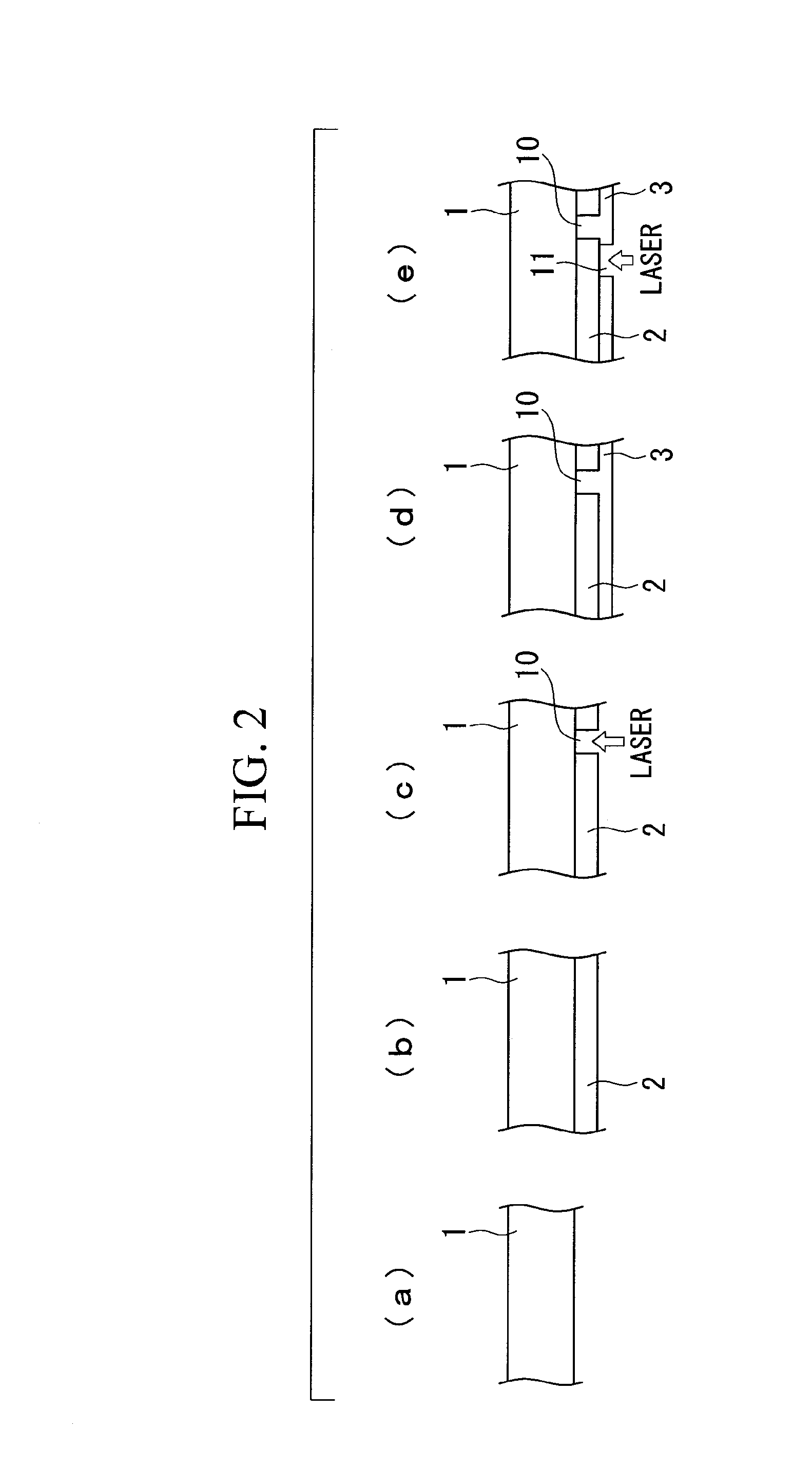Photovoltaic device
a photovoltaic device and photovoltaic technology, applied in the field of photovoltaic devices, can solve the problems of inability to achieve the combination of superior performance and superior solar cell mass productivity, and the rate of deposition is still less than that obtained for deposition using a typical continuous plasma, so as to achieve the effect of improving the efficiency of light absorption and high stability
- Summary
- Abstract
- Description
- Claims
- Application Information
AI Technical Summary
Benefits of technology
Problems solved by technology
Method used
Image
Examples
example 1
[0077]Using a CVD method, an amorphous silicon layer and a crystalline silicon layer were formed, as the first cell layer 91 and the second cell layer 92 respectively, on a glass substrate of dimensions 1.4 m×1.1 m, thus forming a tandem-type solar cell module. Deposition of the crystalline silicon i-layer 42 was conducted at a deposition rate of 2 nm / sec, and the electric power applied to the plasma electrode and the hydrogen dilution ratio were adjusted appropriately to control the distribution of the Raman peak ratio within the substrate plane.
[0078]Following measurement of the solar cell module output, the substrate was partitioned. Samples were taken from 24 locations within the substrate plane, and following removal of the back electrode layer 4 from each sample by wet etching using hydrogen peroxide (concentration: 30%) and dilute hydrochloric acid (molar concentration: 0.2), the Raman spectrum was measured with the crystalline silicon n-layer 43 exposed at the surface, and t...
example 2
[0082]Using a CVD method, an amorphous silicon layer and a crystalline silicon layer were formed, as the first cell layer 91 and the second cell layer 92 respectively, on a glass substrate of dimensions 1.4 m×1.1 m. Subsequently, the substrate was divided in two, forming tandem-type solar cell modules of dimensions 0.7 m×1.1 m. Deposition of the crystalline silicon i-layer 42 was conducted at a deposition rate of 2 nm / sec, and the applied electric power and the hydrogen dilution ratio were adjusted appropriately to control the crystallinity distribution within the substrate plane.
[0083]Following measurement of the solar cell module output, the substrate was partitioned. The Raman spectrum was measured for samples taken from 24 locations within the substrate plane, and the crystallinity 1c / 1a was determined. Prior to measurement of the Raman spectrum, the back electrode layer 4 was removed from each sample using hydrogen peroxide (concentration: 30%) and dilute hydrochloric acid (mol...
example 3
[0087]Using a CVD method, a first cell layer 91 comprising an amorphous silicon i-layer having a film thickness of 220 nm or 350 nm was formed on a glass substrate of dimensions 1.4 m×1.1 m. In order not to alter the productivity of the solar cell module, the deposition process was adjusted so that the amorphous silicon i-layers were deposited over the same deposition time. A CVD method was then used to form, on top of the first cell layer 91, a second cell layer 92 having a crystalline silicon i-layer of Example 1, for which the Raman peak ratio exhibited a range from 3 to 10, an average value of 6.3 and a standard deviation of 1.7, and for which the proportion of regions having a Raman peak ratio of not more than 4 was 3% or less, thus completing a tandem-type solar cell module.
[0088]Table 3 shows the average film thickness of the amorphous silicon i-layer within the solar cell module, the average film thickness of the crystalline silicon i-layer, and the stabilized output for the...
PUM
 Login to View More
Login to View More Abstract
Description
Claims
Application Information
 Login to View More
Login to View More - R&D
- Intellectual Property
- Life Sciences
- Materials
- Tech Scout
- Unparalleled Data Quality
- Higher Quality Content
- 60% Fewer Hallucinations
Browse by: Latest US Patents, China's latest patents, Technical Efficacy Thesaurus, Application Domain, Technology Topic, Popular Technical Reports.
© 2025 PatSnap. All rights reserved.Legal|Privacy policy|Modern Slavery Act Transparency Statement|Sitemap|About US| Contact US: help@patsnap.com



